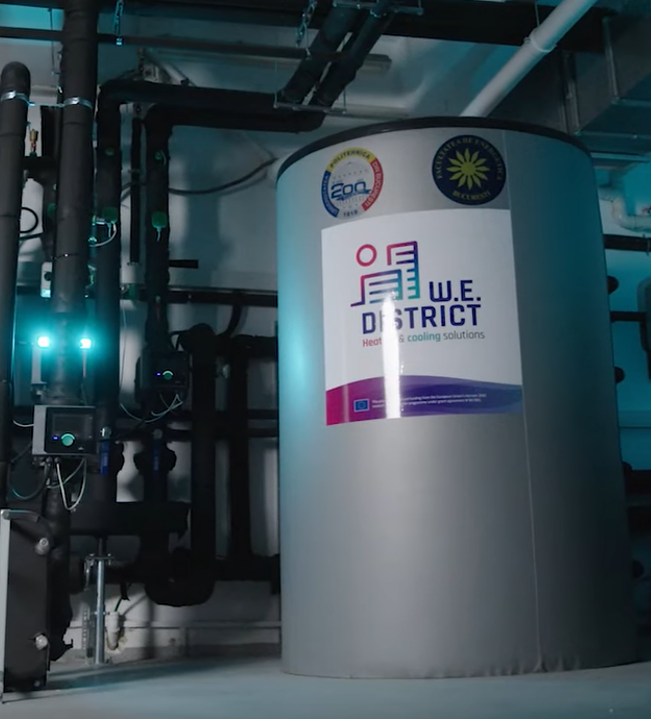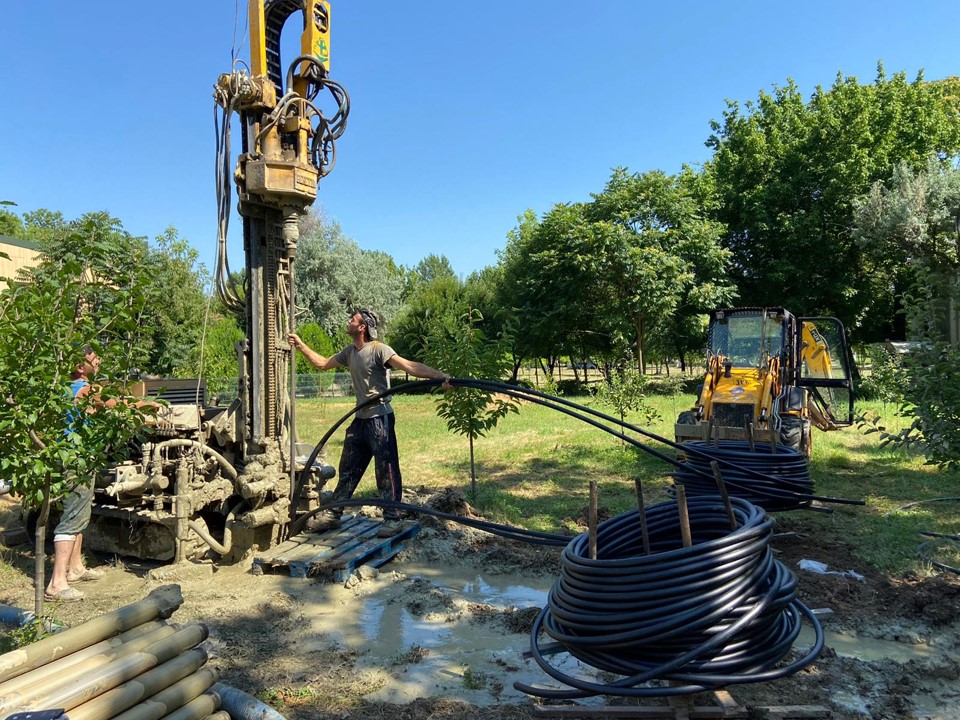
Associate Professor Constantin Ionescu from the Faculty of Energy Engineering at the University Politehnica of Bucharest (UPB) and project manager for the WEDISTRICT project, explains how the demonstrator for the retrofitted district heating system will work.
ESCI: What are the main contributions from University Politehnica of Bucharest to the WEDISTRICT project?
Constantin Ionescu: The University Politehnica of Bucharest, in collaboration with our local technological partner, is responsible for developing solar geothermal technology and implementing it in the Bucharest demonstrator. Additionally, we are also heavily involved in the numerical simulation aspect of the project and, obviously, in the dissemination of the project results. Furthermore, the SCADA (supervisory control and data acquisition) system that will be used to monitor the project and extract data from all measurement sensors is being developed from scratch by our team.
ESCI: You are retrofitting the heating and cooling systems of a research laboratory at the UPB campus – the target building. What is the reason behind this?
Constantin Ionescu: For the demonstrator we considered two energy users: the target building, which is the Renewable Energy Sources Laboratory within the Faculty of Energy Engineering, and the thermal energy distribution network in the university. The target building, located at the end of one of the thermal energy distribution networks, did not receive sufficient energy for heating from the network to be able to ensure the heating of the building. For this reason, the building was disconnected from the local heating network and the thermal energy supply for heating was provided by a local gas boiler. With the implementation of the WEDISTRICT project, the building’s thermal energy supply is ensured completely from renewable sources.
ESCI: What are the energy sources used in this campus?
Constantin Ionescu: The campus is supplied with both heat and electricity from a cogeneration plant that relies on two internal combustion engines running on gas. Therefore, all the energy used to come from fossil sources. With the WEDISTRICT project, a portion of the thermal energy circulating through the university’s network will be generated from renewable sources, which is a first step towards a green campus.

ESCI: How does the new thermal power system work?
Constantin Ionescu: The demonstrator is composed of two subsystems that can work separately but are interconnected: a thermal subsystem and an electrical system. The thermal subsystem is the one responsible for the production of thermal energy- heat and cold- for the main supply of the building. It is based on two geothermal heat pumps with a combined installed power of 63 kilowatts. These heat pumps utilize the energy from the ground to generate hot water at the parameters required to supply the building and the distribution network.
ESCI: Could you explain the process of extracting heat from the ground and its components?
Constantin Ionescu: The ground heat exchanger is a crucial component of our installation, comprising twelve closed boreholes with a depth of 100 meters each. With this system, we extract the heat from the ground, bring it to the level of the heat pumps, and from there the heat pumps multiply this energy, producing the hot water.
ESCI: How is the hot water used?
Constantin Ionescu: The heat pumps generate hot water, which is stored in a 2,000-liter tank. From there, the heat is distributed to three consumers. The first consumer is the heating system of the building itself. The second consumer is the domestic hot water preparation system. Lastly, the surplus energy is injected into the university’s local network, which is a crucial aspect of our project.
ESCI: How is the energy consumed by this thermal subsystem provided?
Constantin Ionescu: The electricity for the demonstrator is provided by the electrical system, which is based on two low voltage networks installed in two different buildings. These electrical systems are based on two photovoltaic systems connected to the latest generation energy storage battery. The total power installed in the photovoltaic panels is 66 kilowatt-peak, and in the battery we have storage of 43 kilowatt-hours.
ESCI: How is it possible to achieve zero carbon emissions?
Constantin Ionescu: The thermal energy produced in the demonstrator comes from the heat pumps that consume electricity produced by our own photovoltaic system. As a result, the target building has zero energy consumption from fossil sources, leading to zero carbon dioxide emissions at the building level.

ESCI: What distinguishes the Bucharest demosite from the other demonstrations in the WEDISTRICT project?
Constantin Ionescu: Each demonstrator has its unique characteristics. Ours stands out for its use of a combination of energy stored in the ground and solar energy. These forms of energy are available worldwide, making this combination replicable in various locations globally.
ESCI: The demosite has attracted several visitors. Could you share their feedback?
Constantin Ionescu: Indeed, we have received both physical and virtual visits, and over the past two years, we have showcased the project as a best practice example in workshops with international participants and conferences. The feedback has been positive. There is considerable interest in this technology and energy combination, particularly in light of recent increases in energy prices. Recently, the University management itself visited us. They were very excited about what was achieved in the project and wanted to know if the demonstrator can be scaled up at the university level.
ESCI: So can this demonstrator be scaled up?
Constantin Ionescu: The answer is obviously yes- and not only at the University level. The project has been positively received by the management. We consider it a first step in the transformation of the energy production and distribution system in the University and towards making a green system based on renewable sources.
Read more about the set-up of the demonstrator in our demosite brochure.
ESCI: Thank you for this interview!
WEDISTRICT’s Bucharest demosite, led by the University Politehnica of Bucharest, in Romania, aims to integrate renewable energy sources into the existing district heating and cooling network. This has been achieved with a hybrid geothermal and solar energy system, using heat pumps powered by photovoltaic panels. Watch our video to learn more about the demosite.